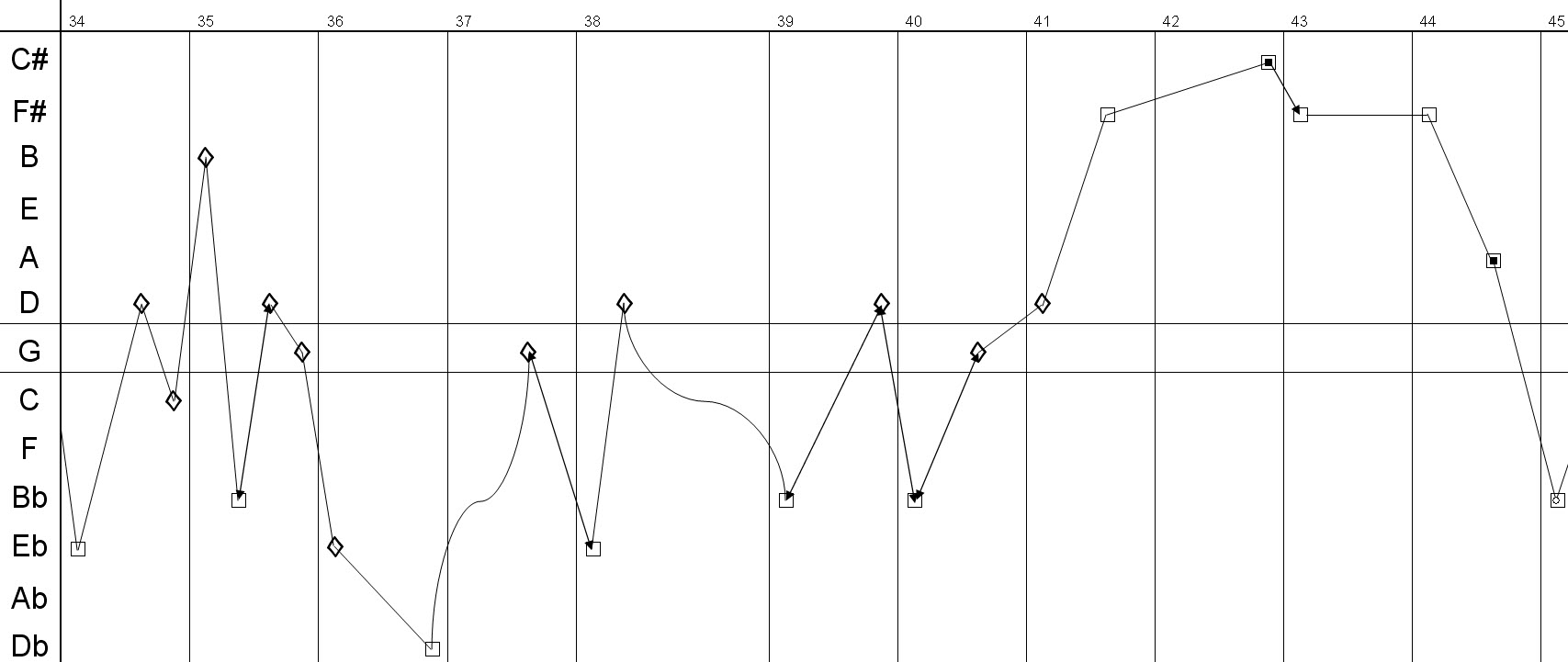Higher
The SeeChord system is very robust when dealing with more complex harmonic analysis. Even pieces that have passages where the harmony is ambiguous or where the intention of the music is to go against the conventions of harmony, a SeeChord chart can help to sketch out where the rules are being adhered to, or whether the music is genuinely atonal.
Here is an example from the Shostakovich string Quintet, 1st Movement:

The curved lines that can be seen in bars 37 and 38 represent some passages of music that are hard to classify in terms of conventional harmony. In this case it is because the instrumental lines are moving in more of a linear fashion producing resultant harmonies that are not structural. This of course could be argued each way, and if it is helpful, the actual notes being played can be displayed on a SeeChord chart to initiate a discussion. In this case however, it is still clear that there are many areas of potential interest around the ambiguous passages, for instance, Schostakovich’s use of major and minor chords, his jumps from relatice major to minor, and chromatic leaps.
SeeChord therefore can be a highly effective research tool in any area that is concerned with the treatment or development of harmony. It is the first time that pieces of music from any genre can really be compared side by side, their harmonic patterns laid bare for analysis.
If you are interested in using SeeChord for research, or in higher education, please contact us for more ideas or to discuss your own ideas.